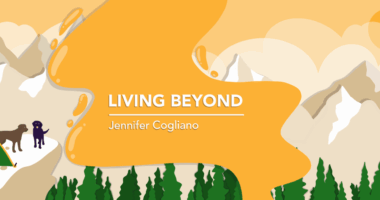AIT’s Nitric Oxide Mist Lowers CF Patients’ Airway Bacteria by 65%, Phase 2 Trial Shows

AIT Therapeutics’ nitric oxide mist led to a 65 percent reduction in cystic fibrosis patients’ airway bacteria and an improvement in their exercise capability 60 days after treatment, a Phase 2 clinical trial shows.
The bacteria that the nitric oxide countered was the Mycobacterium abscessus complex. The exercise-capability yardstick researchers used was the 6-minute walk test — or how far patients could walk in 6 minutes.
“We continue to be delighted with the data from this trial,” Steve Lisi, chairman and chief executive officer of AIT Therapeutics, said in a press release. “With just 21 days of treatment, patients are still benefitting at Day 81 as shown by 6-minute walk data. Additionally, the anti-microbial effect of NO [nitric oxide] is apparent,” with patients experiencing “a 65 percent reduction in bacterial load.”
“Our proprietary system with our NO generator may allow AIT to treat patients at home for an extended period of time, possibly at a higher NO concentration, potentially improving on the strong results shown in our completed study,” Lisi added.
The trial (NCT03208764) is evaluating the safety and effectiveness of administrating nitric oxide intermittently as a gas to cystic fibrosis patients with nontuberculous mycobacteria, particularly Mycobacterium abscessus complex. AIT is continuing to recruit participants for the study.
Researchers said the trial’s primary objective is to assess the therapy’s safety, with the yardstick being any serious adverse events that it generates. Secondary objectives include seeing whether nitric oxide lowers Mycobacterium abscessus levels in patients’ airways and improves their performance on the 6-minute walk test.
Participants receive nitric oxide and antibiotics for 21 days. In the first 14 days the gas is delivered 5 times a day, and in the last 7 days three times a day. Each 30-minute treatment session is separated by an off period of at least 3 hours.
Researchers followed patients for 81 days, including 60 days after treatment.
Patients’ bacteria levels at day 81 were 65 percent lower than at the beginning of the study. Their performance in the 6-minute walk also improved. The best results were on day 14 and 21, but they continued to be better at day 81 than before treatment.
“The benefits of nitric oxide are clearly demonstrated in this trial,” said Dr. Andrew Colin, the study’s principal clinical consultant.
Patients with high levels of Mycobacterium abscessus complex “mostly have a downhill trajectory and very limited therapeutic options,” said Colin, director of the division of Pediatric Pulmonology at the University of Miami. “The possibility of using AIT’s system to treat patients chronically, at home, is a very promising development. I am looking forward to assisting AIT in getting their system approved, and use it to study a broader array of patients with cystic fibrosis and other chronic lung diseases.”
AIT Therapeutics plans to meet with U.S. Food and Drug Administration officials during 2018 to discuss a pivotal clinical trial of its nitric oxide mist for cystic fibrosis and other lung diseases that include infections. A pivotal trial is one that’s intended to provide evidence for a drug’s regulatory approval.
The Phase 2 trial findings bolster preliminary results showing that the therapy was effective at day 21.






